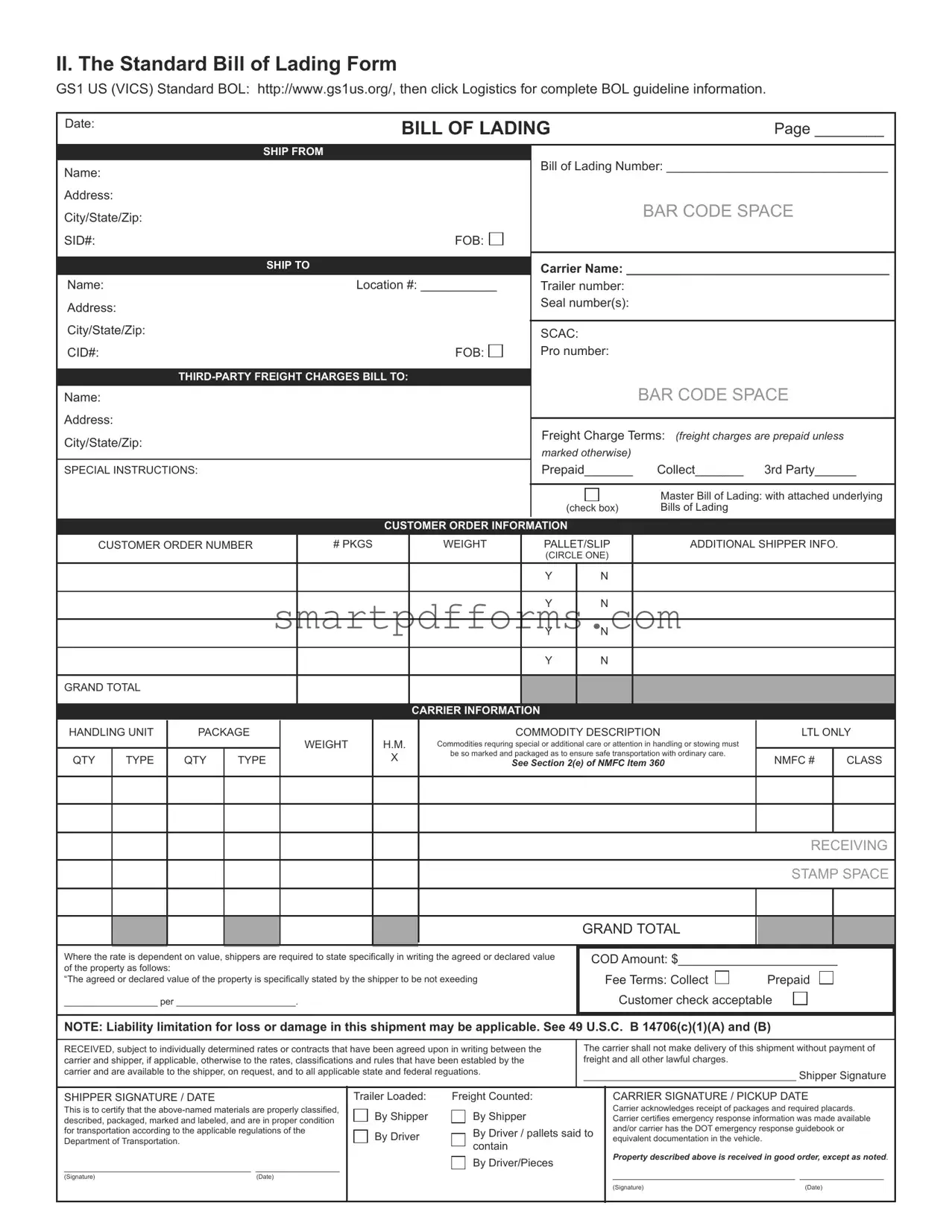Blank Vics Bill Lading PDF Template
The VICS Bill of Lading Form serves as a critical document in the transportation and logistics industry, outlining the details of shipped goods between a seller and a carrier. It stands as both a receipt of merchandise for the carrier and as a contract of carriage for the shipper. For those involved in these industries, understanding how to properly fill out this form is paramount. Click this button to learn more about filling out the form accurately.
Make This Document Now


